Loading Round Wood in Forestry Trucks and Forestry Platforms: A Case Study for Romania
Abstract
1. Introduction
- To evaluate transport distances when the wood must be transported to locals or different contractors;
- To evaluate the productivity when loading round wood in forestry trucks (ATF) and forestry platforms (APF) either in the harvesting area or from wood storage;
- To analyze the working time and the working elements of wood loading in forestry trucks;
- To highlight the factors that can influence the productivity of wood loading in different vehicles.
2. Materials and Methods
2.1. Study Area
2.2. Methodology
3. Results
3.1. Evaluation of Wood Transport Distances in the Case of Locals and Different Contractors
3.2. Comparisons between the Loaded Volumes and the Loading Times of Wood for Forestry Trucks (ATF) and Forestry Platforms (APF)
3.3. Evaluation of the Loading Operation of Wood in Forestry Trucks
3.4. The Loading Productivity When Forestry Trucks (ATF) and Forestry Platforms (APF) Are Used
4. Discussion
5. Conclusions
Author Contributions
Funding
Data Availability Statement
Acknowledgments
Conflicts of Interest
References
- Potočnik, I.; Pentek, T.; Pičman, D. Impact of traffic characteristics of forest roads due to forest management. CROJFE 2005, 26, 51–57. [Google Scholar]
- Grulois, S.; Pellegrini, M.; Lingua, E.; Grignolato, S.; Protti, F.; Vitali, A.; Rebolj, L.; Grum, A.; Ginet, C.; Corette, T.; et al. General presentation of the wood transport sector in the alpine space. Interreg Alpine Space Project. 2014. projectno.2-3-2-FR. Available online: https://www.alpine-space.eu/projects/ (accessed on 10 May 2024).
- Fornea, M.; Bîrda, M.; Borz, S.A.; Popa, B.; Tomašić, Ž. Harvesting conditions, marketparticularitiesorjusteconomiccompetition:ARomaniancasestudyregardingtheevolutionofstandingtimbercontractingrates. Šumarski List 2018, 142, 403–409. [Google Scholar] [CrossRef]
- Iordache, E.; Niță, M.D.; Clinciu, I. Planning forest accessibility with a low ecological impact. CROJFE 2012, 33, 143–147. [Google Scholar]
- Popovici, V.; Bereziuc, R.; Clinciu, I. Extinderea rețelei de drumuri pentru accesibilizarea fondului forestier și, în general, a pădurii. Bucov. For. 2003, 11, 36–40. [Google Scholar]
- Acuna, M. Timber and biomass transport optimization: A review of planning issue, solution techniques and decision support tools. CROJFE 2017, 38, 279–290. [Google Scholar]
- Bitir, I.; Mușat, E.C.; Derczeni, R.A.; Ciobanu, V.D. The influence of the increased tonnage upon the super structure of forest roads. In Proceedings of the 19th International Multidisciplinary Scientific GeoConference SGEM 2019, Albena, Bulgaria, 30 June–6 July 2019; SGEM 19(3.2). pp. 853–860. [Google Scholar]
- Beldeanu, E. Produse Forestiere; Transilvania University Press: Brasov, Romania, 2008; p. 331. [Google Scholar]
- Tahvanainen, T.; Anttila, P. Supply chain cost analysis of long-distance transportation of energy wood in Finland. Biomass Bioenergy 2011, 35, 3360–3375. [Google Scholar] [CrossRef]
- Mousavi, R.; Naghdi, R. Time consumption and productivity analysis of timber trucking using two kinds of trucks in northern Iran. J. For. Sci. 2013, 59, 211–221. [Google Scholar] [CrossRef]
- Zanuncio, A.J.V.; Carvalho, A.G.; da Silva, M.G.; Lima, J.T. Importance of wood drying to the forest transport and pulp mill supply. Cerne 2017, 23, 147–152. [Google Scholar] [CrossRef]
- Olteanu, N. Drumuri Forestiere. In Proiectare; Transilvania University Press: Brasov, Romania, 1995; p. 173. [Google Scholar]
- Epstein, R.; Karlsson, J.; Rönnqvist, M.; Weintrab, A. Forest Transportation. In Handbook on Operations Research in Natural Resources; Springer: NewYork, NY, USA, 2007; pp. 391–403. [Google Scholar]
- Holzleitner, F.; Kanzian, C.; Stampfer, K. AnAnalyzing time and fuel consumption in road transport of round wood with an onboard fleet manager. Eur. J. Forest Res. 2011, 130, 293–301. [Google Scholar] [CrossRef]
- Kärhä, K.; Seuri, M.; Donagh, P.M.M.; Acuna, M.; Kanzian, C.; Petković, V.; Gonçalves, R.R.C.; Costa, L.H.S.; da Cruz, R.C.; Krumov, T.; et al. Overview of global long-distance road transportation of industrial roundwood. CROJFE 2024, 25, 217–236. [Google Scholar] [CrossRef]
- Bereziuc, R. ReRealizări și perspective în domeniul căilor forestiere de transport. Analele Univ. “Ștefan Cel Mare” Suceava 2004, 2, 9–14. [Google Scholar]
- Asikainen, A. SiSimulation of logging and barge transport of wood from forests on islands. J. For. Eng. 2001, 12, 43–50. [Google Scholar] [CrossRef]
- Ciubotaru, A. Exploatarea Pădurilor; Lux Libris Publishing House: Brasov, Romania, 1998; p. 176. [Google Scholar]
- Malinen, J.; Nousiainen, V.; Palojärvi, K.; Palander, T. Prospects and challenges of timber trucking in a changing operational environment in Finland. CROJFE 2014, 35, 91–100. [Google Scholar]
- Palander, T.; Kärhä, K. Potential traffic levels after increasing the maximum vehicle weight in environmentally efficient transportation system: The case of Finland. J. Sustain. Dev. Energy Water Environ. Syst. 2017, 5, 417–429. [Google Scholar] [CrossRef]
- Normativ Privind Proiectarea Drumurilor Forestiere PD—003—11. Emis Prin Ordinul Ministrului Mediului şi Pădurilor nr. 1374 din 04.05.2012. 272p. Available online: https://gov.ro/ro/guvernul/procesul-legislativ/note-de-fundamentare/nota-de-fundamentare-hg-nr-33-18-01-2024&page=8 (accessed on 21 May 2024).
- Sosa, A.; Klvac, R.; Coates, E.; Kent, T.; Devlin, G. Improving log loading efficiency for improved sustainable transport with the Irish forest and biomass sector. Sustainability 2015, 7, 3017–3030. [Google Scholar] [CrossRef]
- Mușat, E.C.; Greșiță, C.I.; Maican, I. Analysis of transported volumes and unloading times of raw material used in manufacturing OSB boards. In Proceedings of the 19th International Multidisciplinary Scientific Geoconference SGEM 2019, issue 1.4. Science and Technologies in Geology, Oil and Gas Exploration, Water Resources, Forest Ecosystems, Vienna, Austria, 9–10 December 2019; Volume 19, pp. 335–342. [Google Scholar]
- Oprea, I.; Sbera, I. Tehnologia Exploatării Lemnului; Tridona Publishing House: Oltenița, Romania, 2004; p. 369. [Google Scholar]
- Palander, T.; Viitamäki, K.; Borz, S.A. Impacts f using larger and heavier vehicles on operations and profitability of timber transportation: The case of Finish operating environment. Ann. For. Res. 2023, 66, 45–68. [Google Scholar] [CrossRef]
- Palander, T.; Haavikko, H.; Kortelainen, E.; Kärhä, K.; Borz, S.A. Improving environmental and energy efficiency in wood transportation for a carbon-neutral forest industry. Forests 2020, 11, 1194. [Google Scholar] [CrossRef]
- Navarro Maroto, P.J.; Rodriques Bayo, J.; Codinai Palou, M.; Dominquezi Tores, G.; Lopes Vicens, Y. Prospects for the Market Supply of Wood and Other Forest Products From Areas with Fragmented Forest Ownership Structure. Task II. Case Study: Catalonia, Spain. Centre Tecnologic Forestal de Catalunya, 14–48. Available online: https://op.europa.eu/en/publication-detail/-/publication/b67b91af-efcd-4b46-87c6-c4f4d23448b8 (accessed on 15 November 2022).
- Jucan, V. Autovehiculul, drumul sau încărcătura? (I). Bucov. For. 1994, 2, 98–100. [Google Scholar]
- Ryan, T.; Phillips, H.; Ransay, Y.; Dempsey, J. Forest Road Manual. Guidelines for the Design, Construction and Management for Forest Roads. Available online: https://www.semanticscholar.org/paper/Forest-road-manual%3A-guidelines-for-the-design%2C-and-Ryan-Phillips/529ca8ab9771c8e728bf29a966b67cc7857b8c2b (accessed on 12 May 2024).
- Brown, M.W. Evaluation of the impact of timber truck configuration and tare weight on payload efficiency: An Australian case study. Forests 2021, 12, 855. [Google Scholar] [CrossRef]
- Mușat, E.C.; Bitir, I. Evaluating the forest road systems subjected to different loadings by using the Finite Element Method. Forests 2022, 13, 1872. [Google Scholar] [CrossRef]
- Kogler, C.; Rauch, P. Lead time and quality driven transport strategies for the wood supply chain. Res. Transp. Bus. Manag. 2023, 47, 100946. [Google Scholar] [CrossRef]
- Knight, C.R.D.; Bolding, C.; Conrad, J.L., IV.; Barrett, S.M. Log truck transportation challenges and innovative solutions: Evaluating the perspectives of truck drivers, logging business owners, and forests. J. For. Eng. 2023, 37, 113–121. [Google Scholar] [CrossRef]
- Palmgren, M. Optimisation Methods for Log Truck Scheduling. Ph.D. Thesis, Linköping University, Linköping, Sweden, 2001. [Google Scholar]
- Horodnic, S. Bazele Exploatării Lemnului; Ștefancel Mare University Publishing House: Suceava, Romania, 2003; p. 294. [Google Scholar]
- Mușat, E.C.; Iancu, B.I.; Derczeni, R.A.; Ciobanu, V.D. nalysis of transport distances and wood volumes purchased by a woodworking company. In Proceedings of the 19th International Multidisciplinary Scientific Geoconference SGEM 2019—Water Resources. Forest, Marine and Ocean Ecosystem, Albena, Bulgaria, 12 July 2019; Volume 19, pp. 617–624. [Google Scholar]
- Olsson, L.; Lohmander, P. Optimal forest transportation with respect to road investments. Forest Policy Econ. 2015, 7, 369–379. [Google Scholar] [CrossRef]
- Kärhä, K.; Rantala, T. The biggest bottlenecks and the most potential development measures in long-distance road transport of industrial roundwood in Finland. In Proceedings of the Joint 44th Annual Meeting of Council on Forest Engineering (COFE), the 54th International Symposium on Forest Mechanization (FORMEC), and IUFRO All-Division 3 Meeting, Corvallis, OR, USA, 4–7 October 2022; Shaping Our Future Together. p. 74. [Google Scholar]
- Bitir, I.; Mușat, E.C.; Lunguleasa, A.; Ciobanu, V.D. Monitoring the transport on the Ciobănuș forest road within the Bacău Forestry Department. Recent J. 2021, 1, 10–16. [Google Scholar] [CrossRef]
- Iftime, M.; Mușat, E.C.; Ciobanu, V.D. Analysis of the working accidents recorded during the harvesting of the trees, between 2013–2018, for workers of the National Forest Administration, Romsilva, Romania. J. Environ. Prot. Ecol. 2019, 20, 1717–1726. [Google Scholar]
- Koirala, A.; Kizha, A.R.; DeHoop, C.F.; Roth, B.E.; Han, H.-S.; Hiesl, P.; Abbas, D.; Gautam, S.; Baral, S.; Bick, S.; et al. Annotated bibliography of the global literature on the secondary transportation of raw and comminuted forest products (2000–2015). Forests 2018, 9, 415. [Google Scholar] [CrossRef]
- Smidt, M.F.; Mitchell, D.; Logan, K.K. The potential for effective training of logging truck drivers. J. Agric. Sat. Health. 2021, 27, 29–41. [Google Scholar] [CrossRef]
- Conrad, J.L. Evaluating profitability of individual timber deliveries in the US South. Forests 2021, 12, 437. [Google Scholar] [CrossRef]
- Deckard, D.L.; Newbold, R.A.; Vidrine, C.G. Benchmark roundwood delivery cycle-times and potential efficiency gains in the southern United States. For. Prod. J. 2003, 53, 61–69. [Google Scholar]
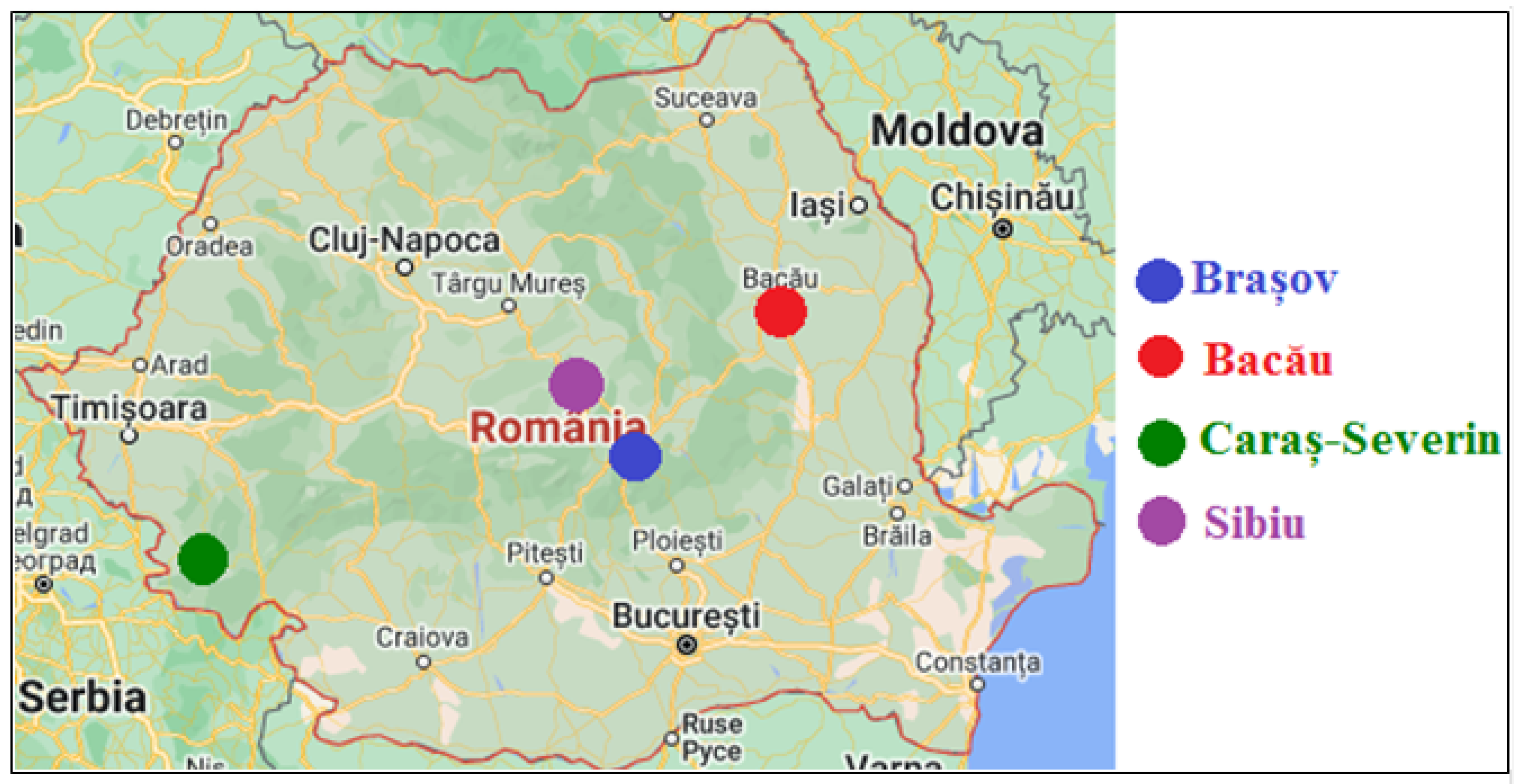

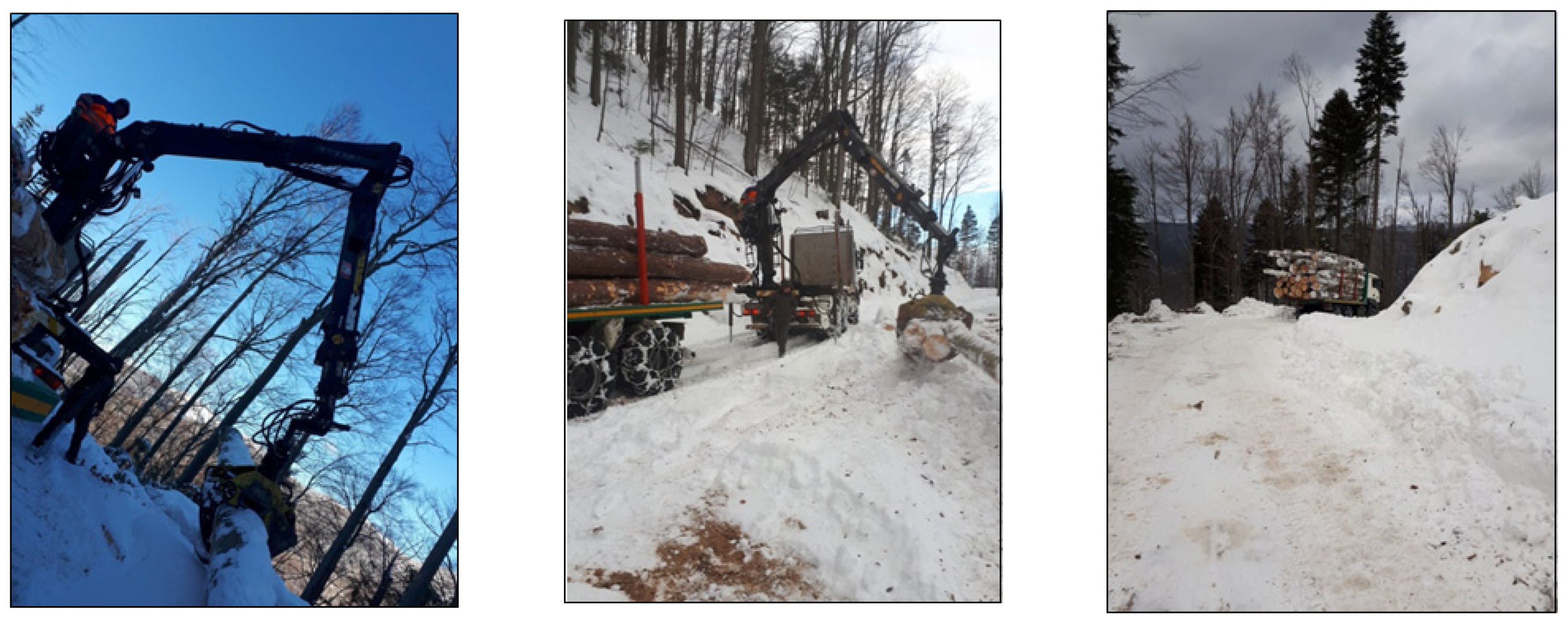
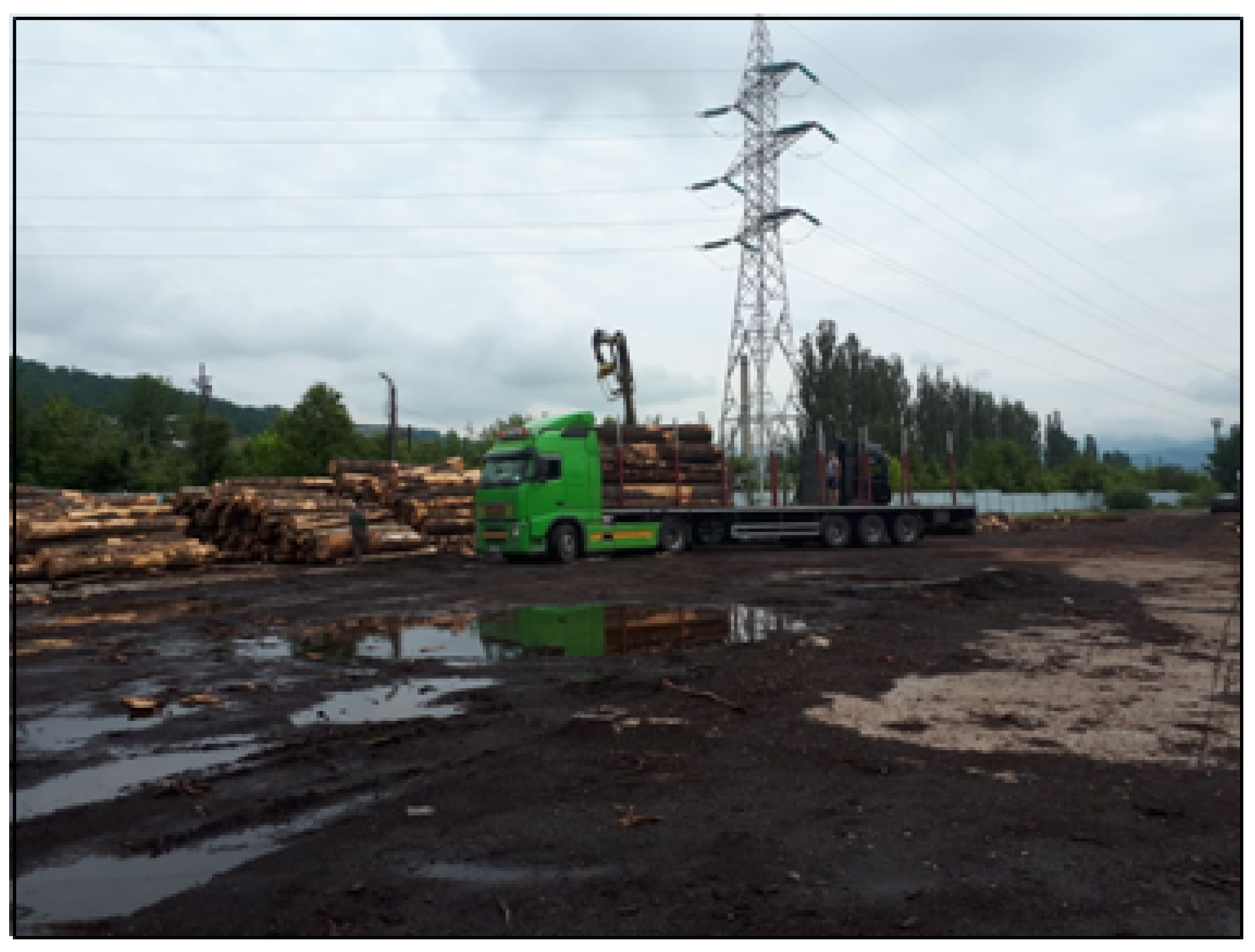
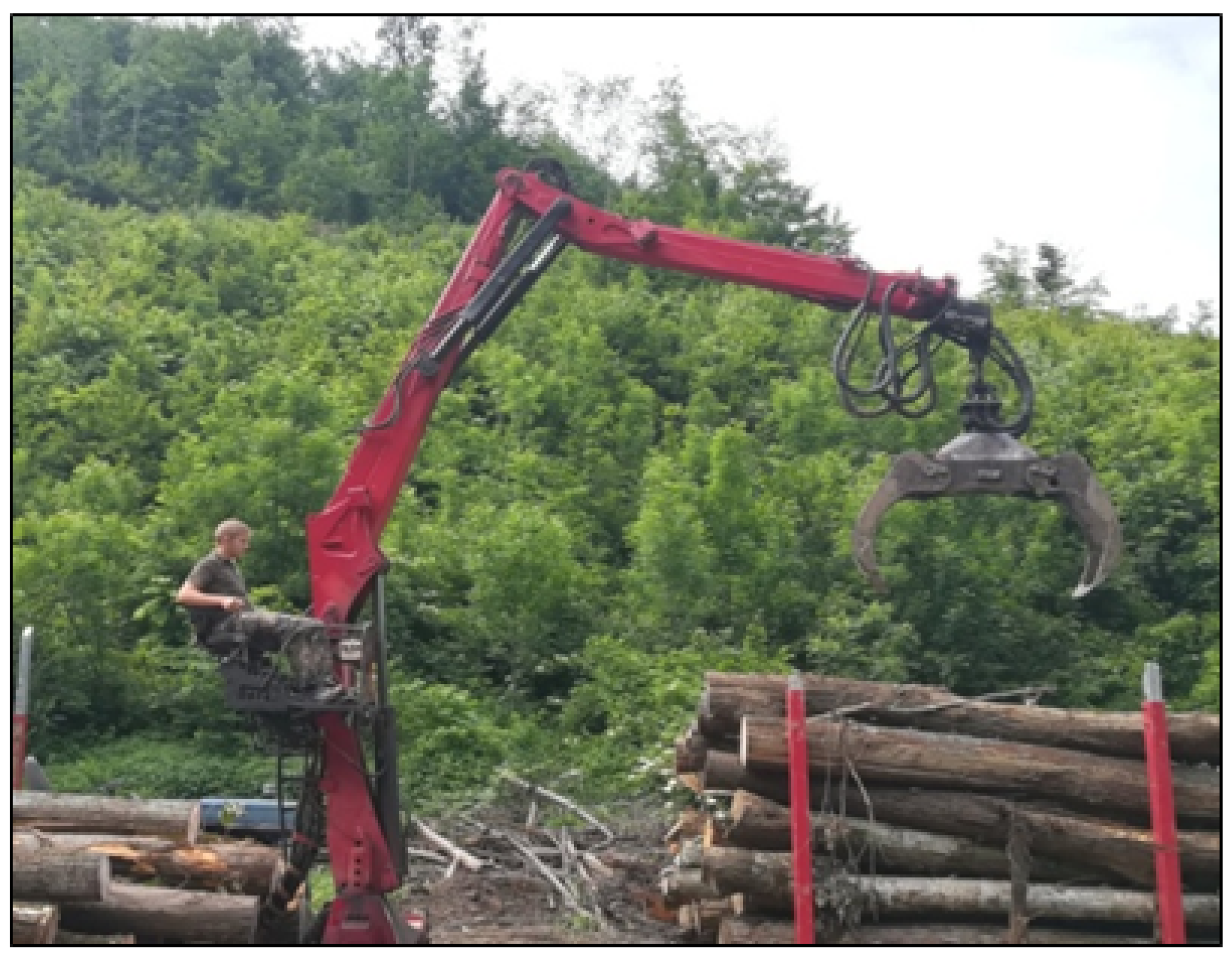



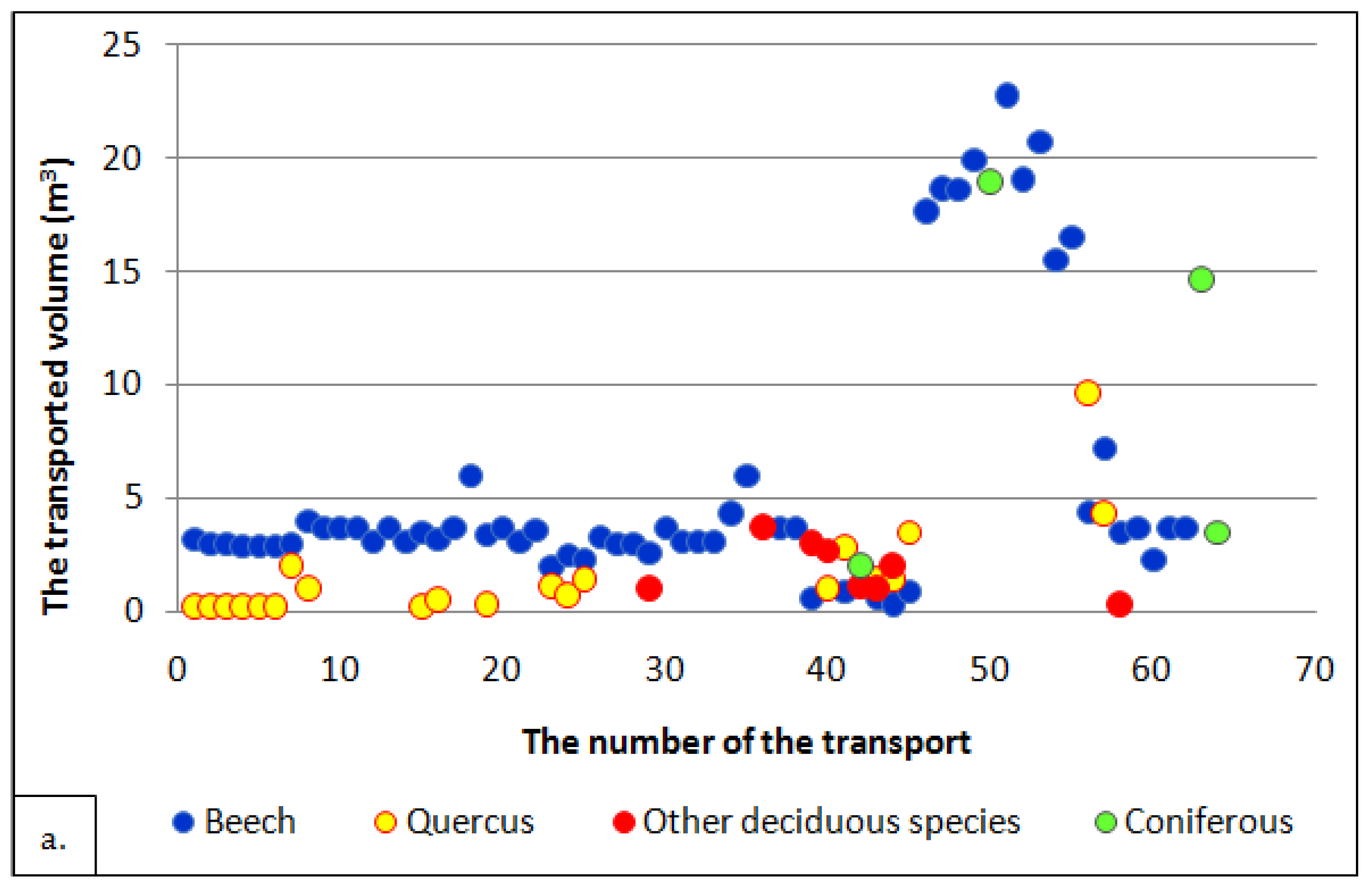


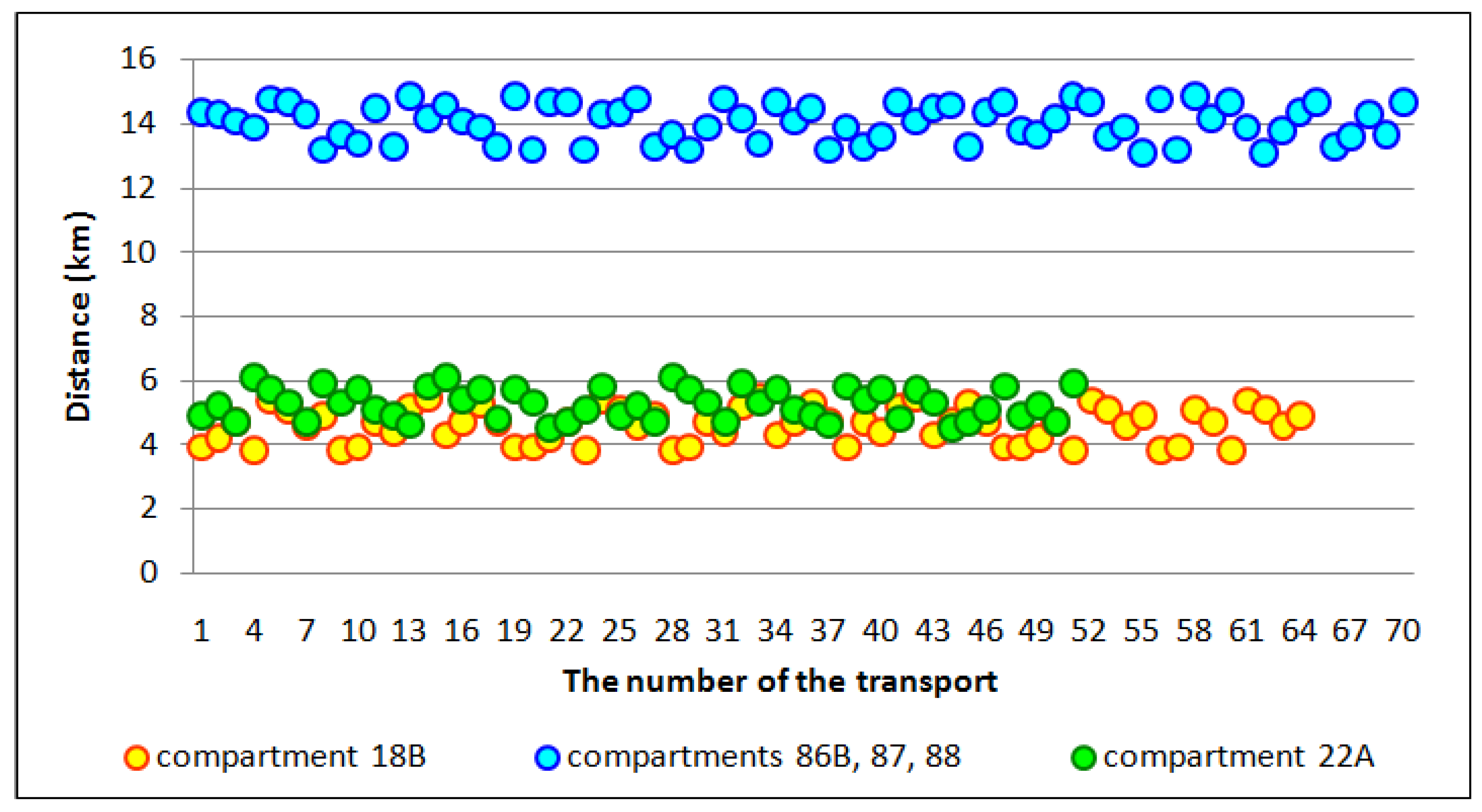

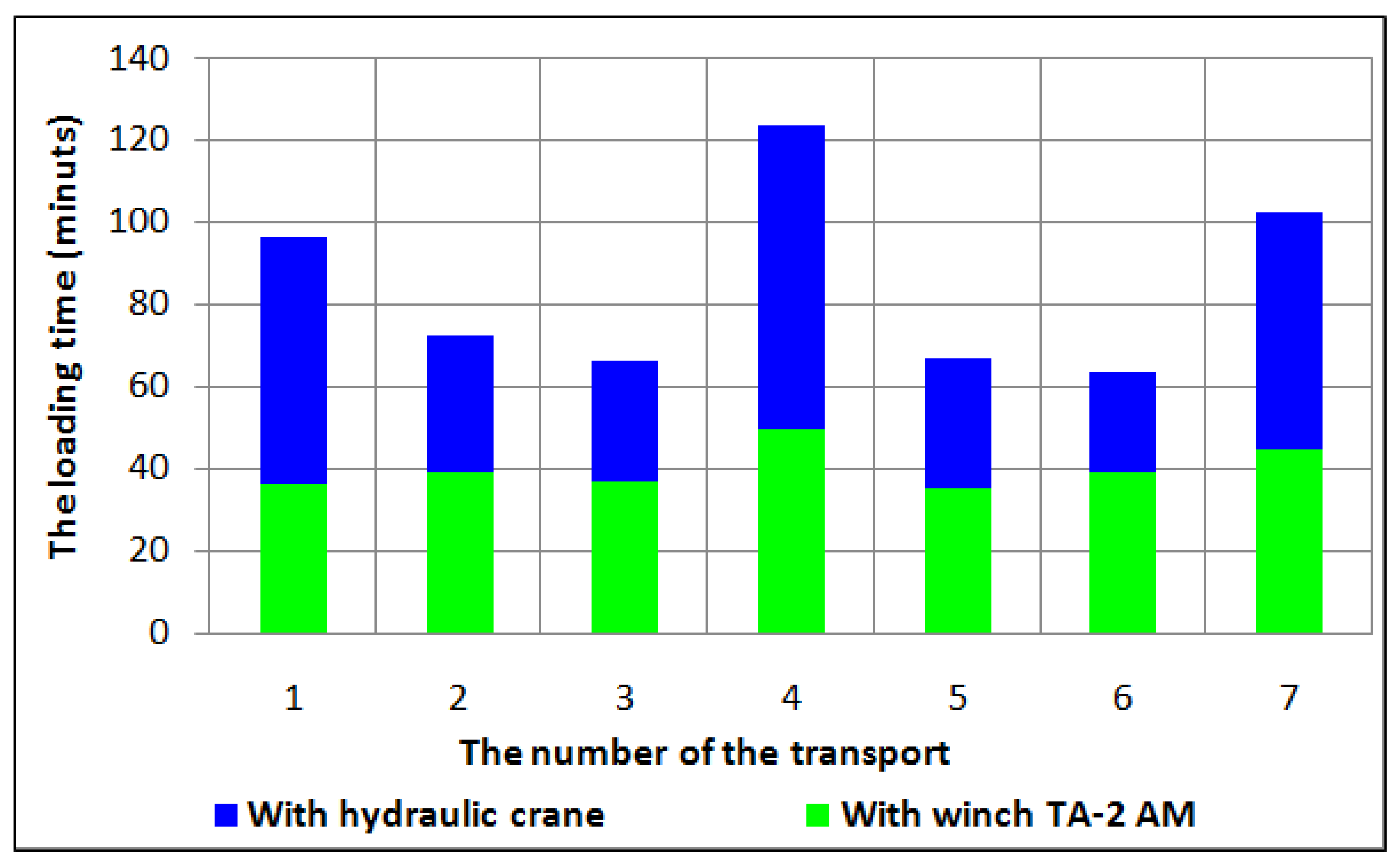
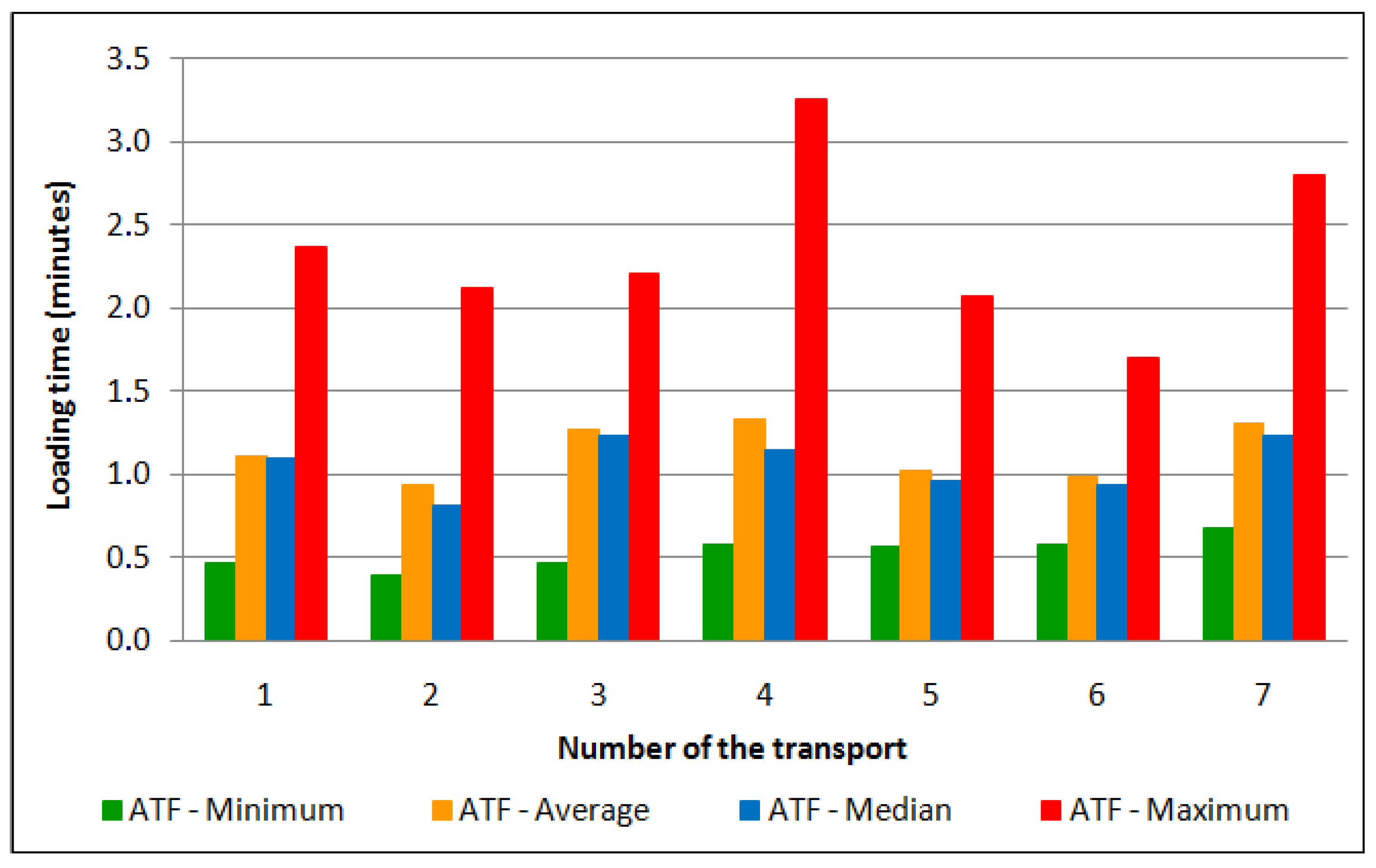
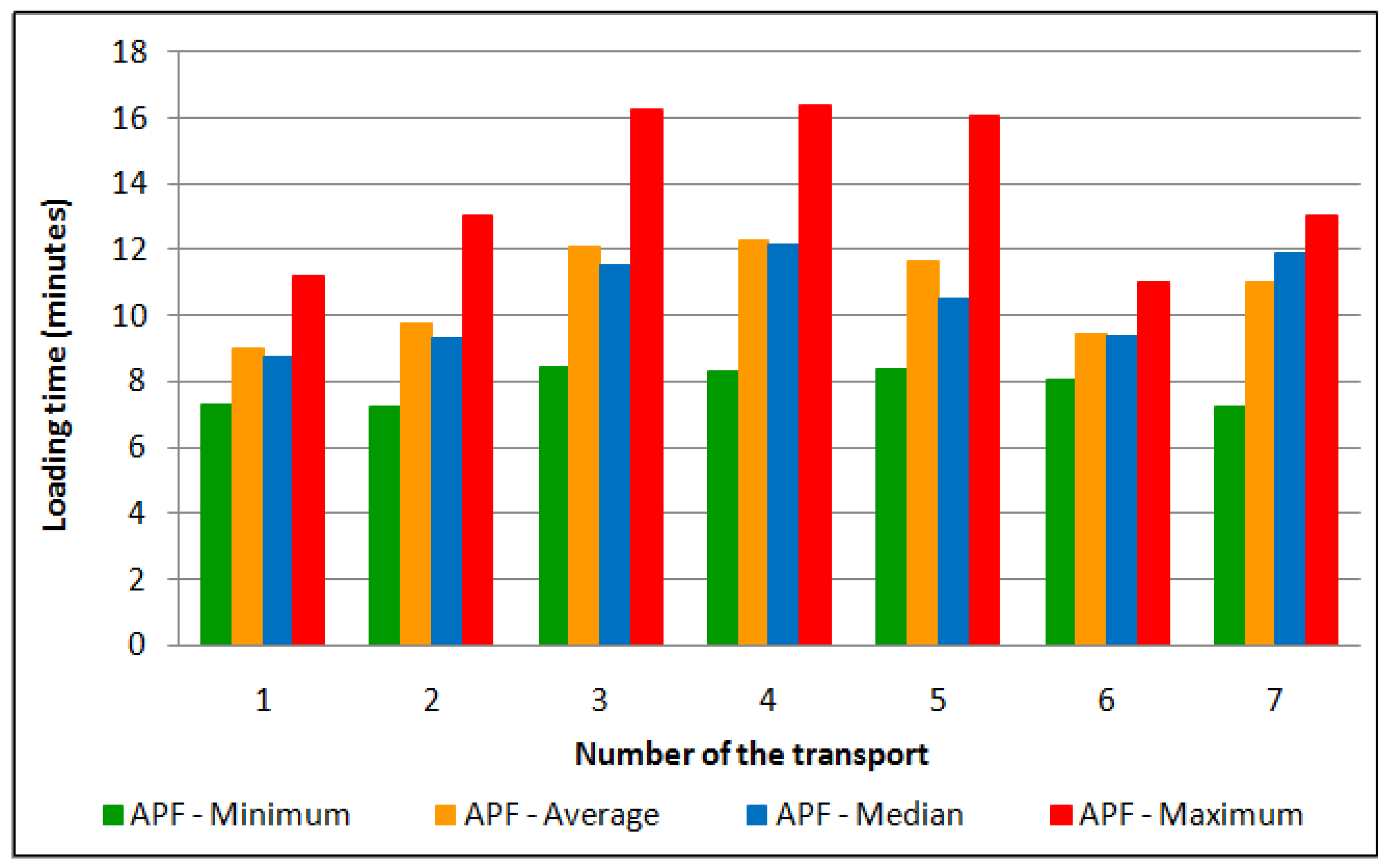
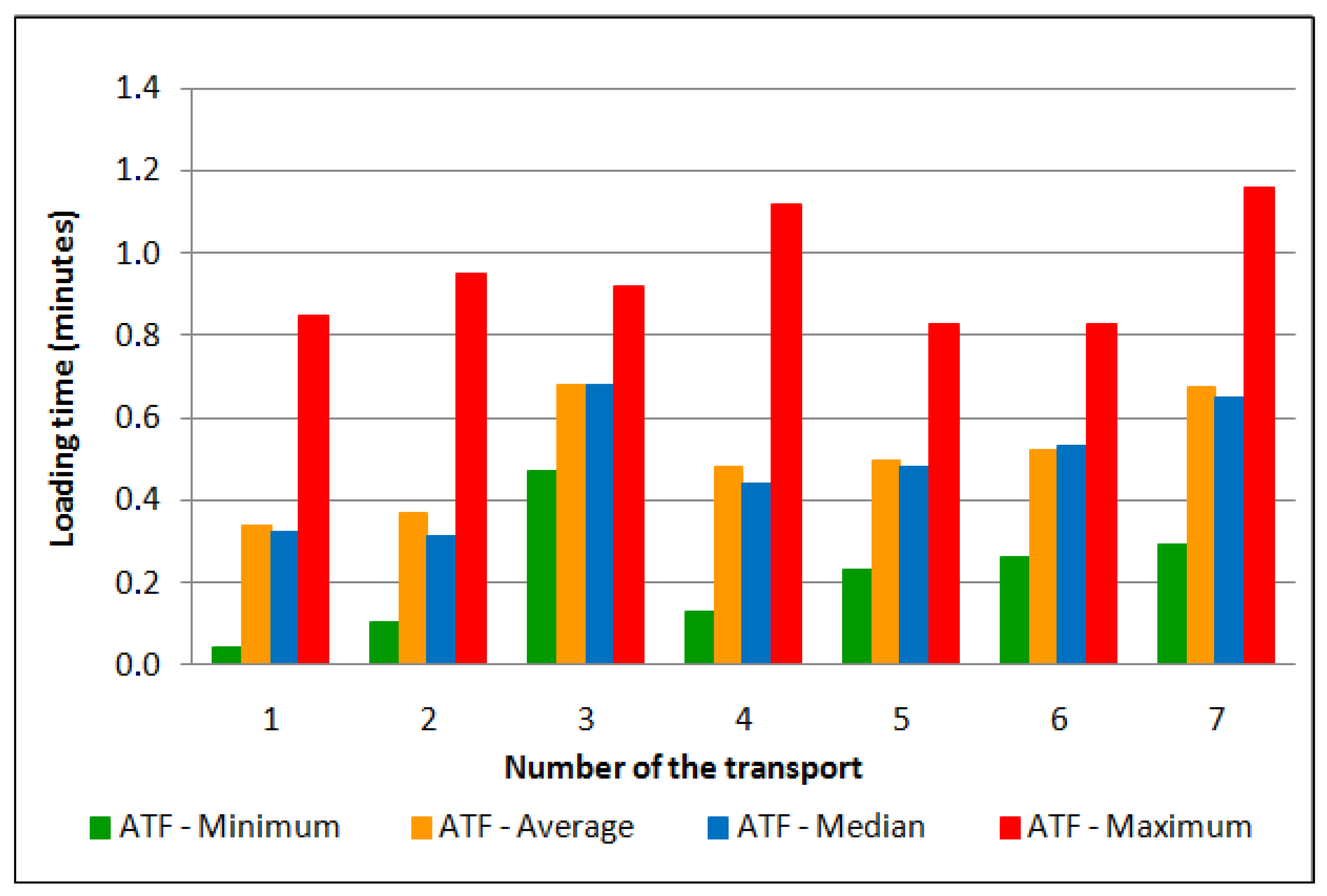


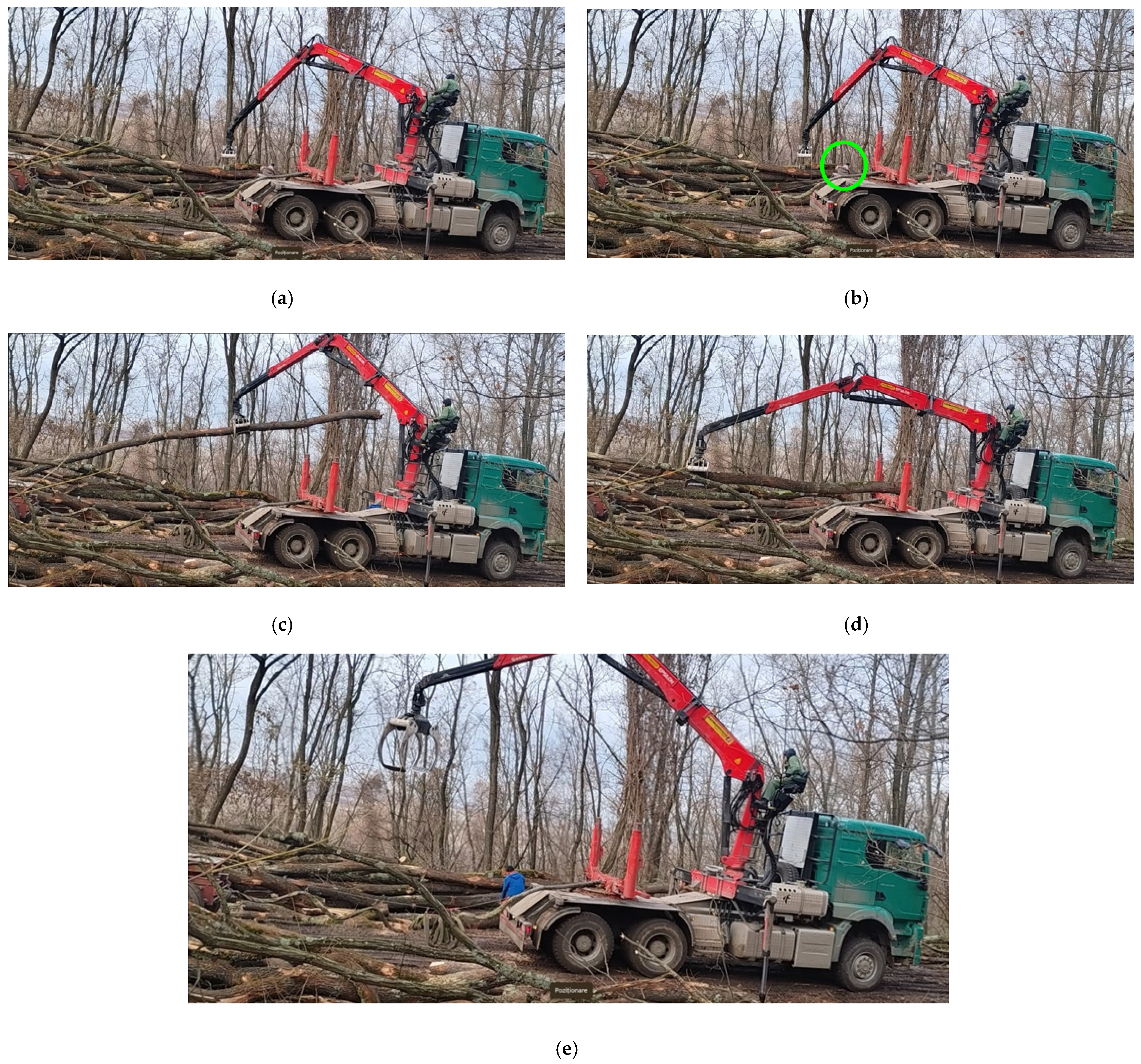
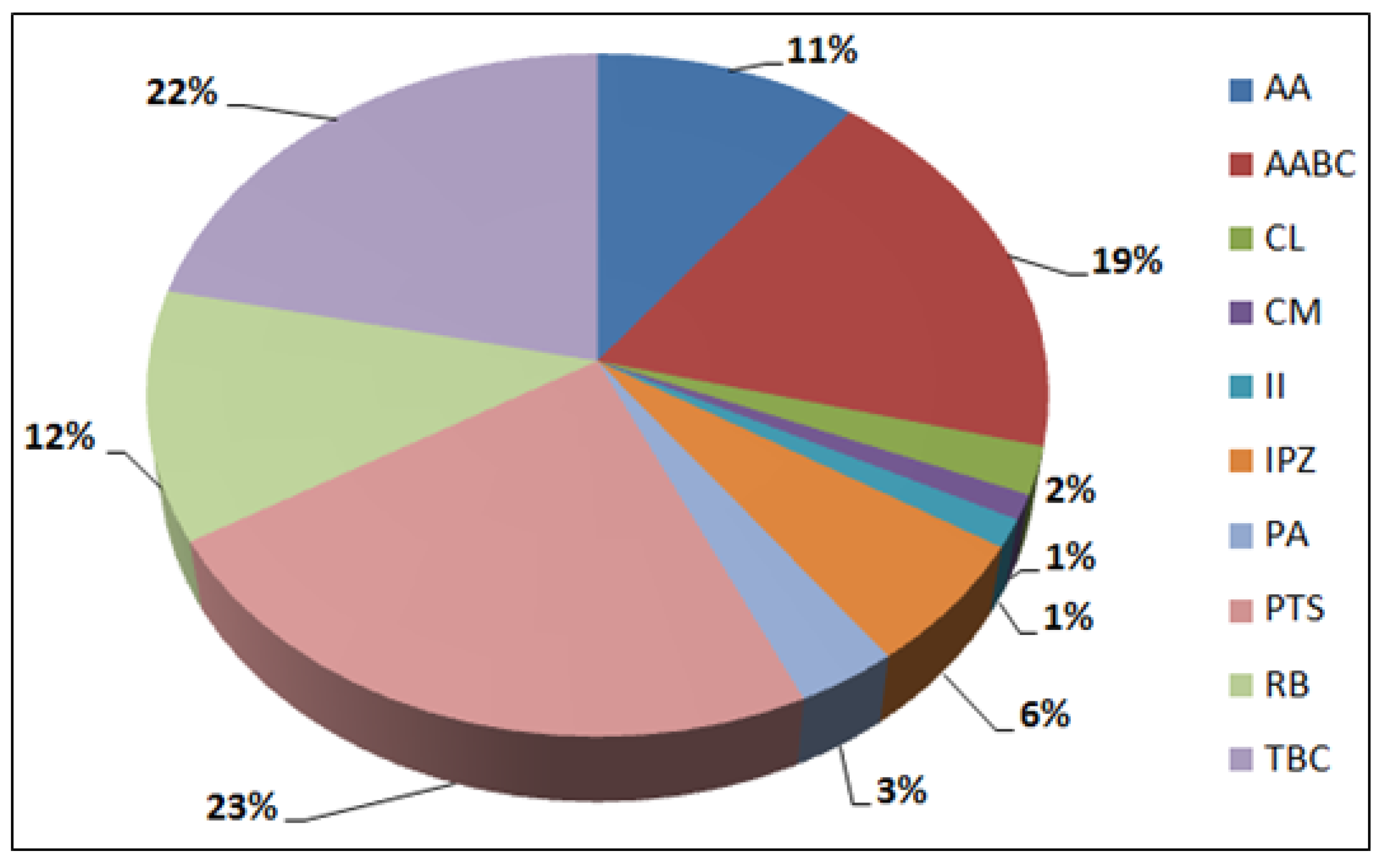
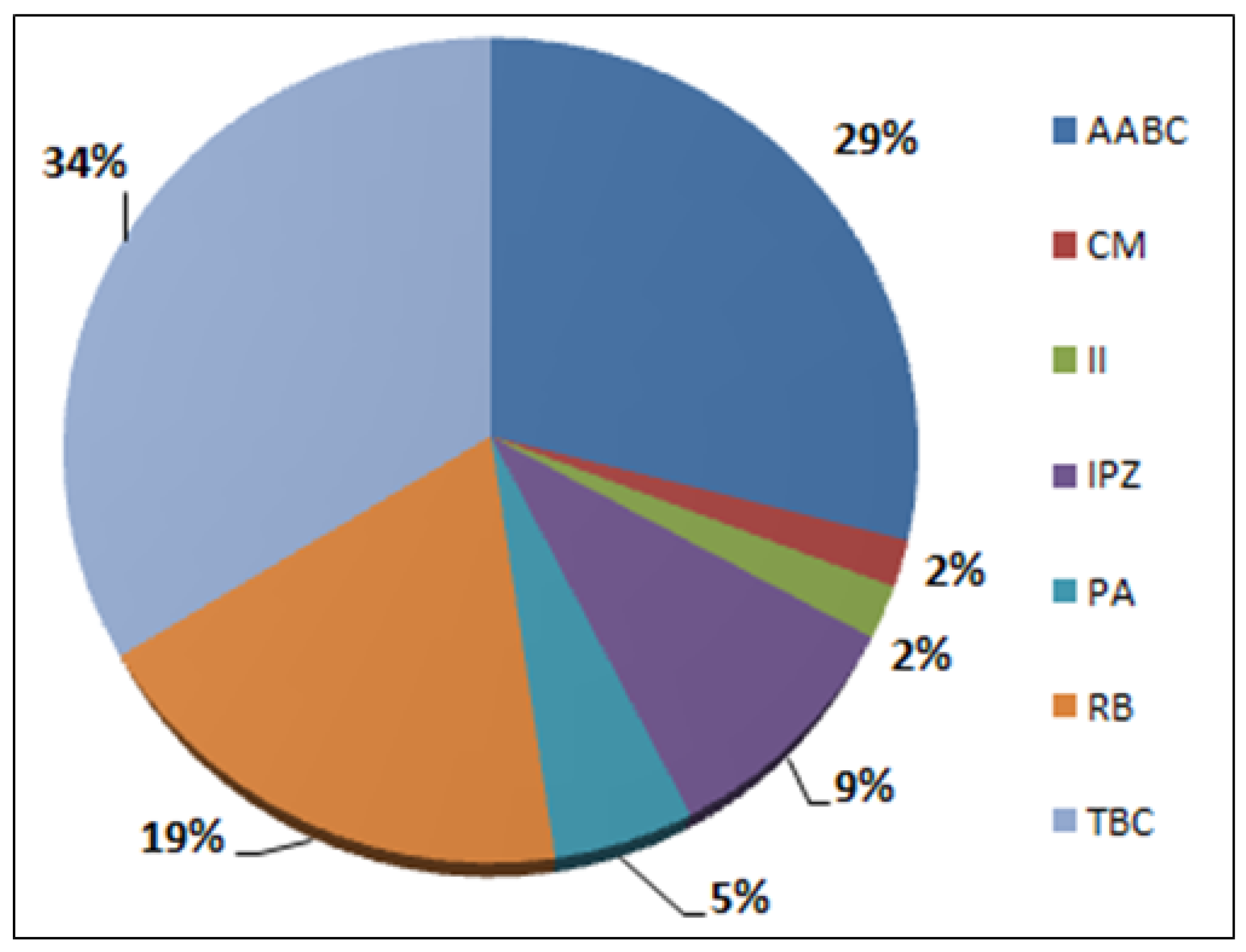
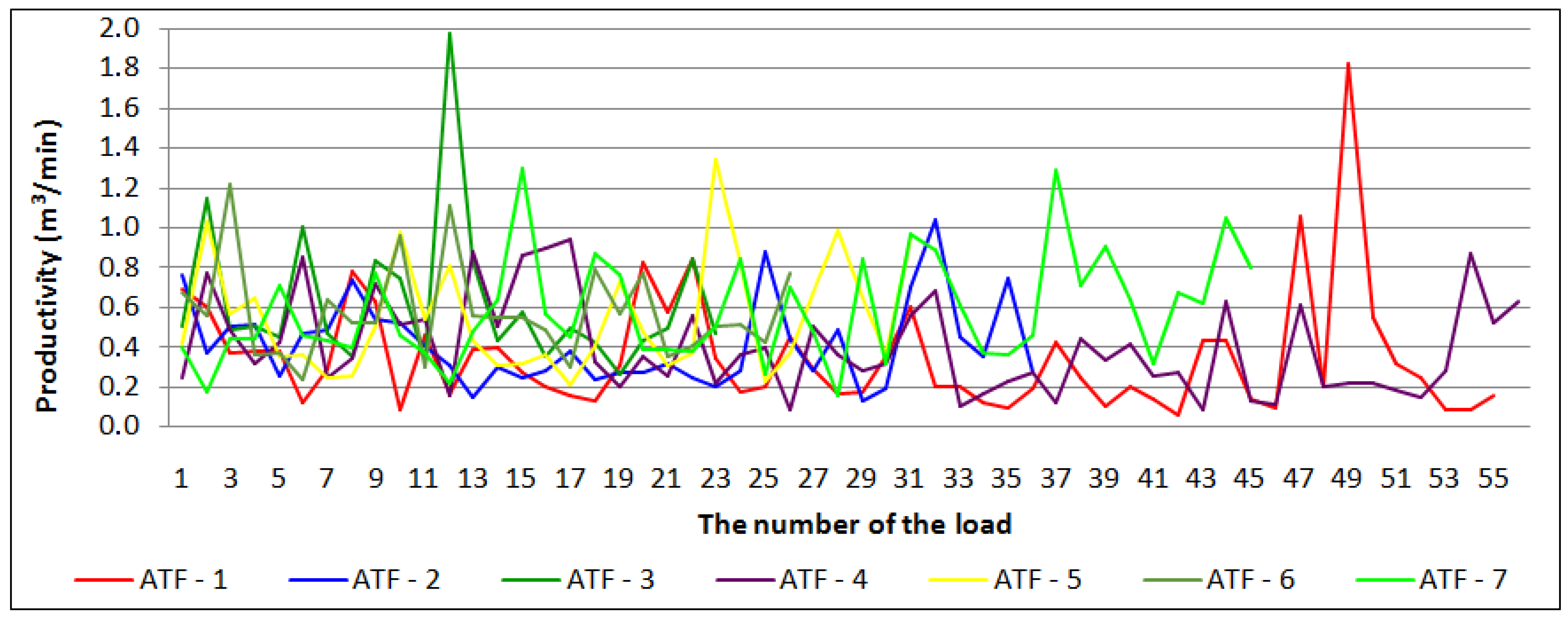

Disclaimer/Publisher’s Note: The statements, opinions and data contained in all publications are solely those of the individual author(s) and contributor(s) and not of MDPI and/or the editor(s). MDPI and/or the editor(s) disclaim responsibility for any injury to people or property resulting from any ideas, methods, instructions or products referred to in the content. |
© 2024 by the authors. Licensee MDPI, Basel, Switzerland. This article is an open access article distributed under the terms and conditions of the Creative Commons Attribution (CC BY) license (https://creativecommons.org/licenses/by/4.0/).
Share and Cite
Mușat, E.C.; Abutnăriței, G.L.; Hogea, D.D.; Miu, L.D.; Avram, V.N.; Saicu, Ș.; Derczeni, R.A. Loading Round Wood in Forestry Trucks and Forestry Platforms: A Case Study for Romania. Forests 2024, 15, 1646. https://doi.org/10.3390/f15091646
Mușat EC, Abutnăriței GL, Hogea DD, Miu LD, Avram VN, Saicu Ș, Derczeni RA. Loading Round Wood in Forestry Trucks and Forestry Platforms: A Case Study for Romania. Forests. 2024; 15(9):1646. https://doi.org/10.3390/f15091646
Chicago/Turabian StyleMușat, Elena Camelia, Gheorghiță Lucian Abutnăriței, Dumitrel Daniel Hogea, Lucian Denis Miu, Vasile Nicolae Avram, Ștefan Saicu, and Rudolf Alexandru Derczeni. 2024. "Loading Round Wood in Forestry Trucks and Forestry Platforms: A Case Study for Romania" Forests 15, no. 9: 1646. https://doi.org/10.3390/f15091646
APA StyleMușat, E. C., Abutnăriței, G. L., Hogea, D. D., Miu, L. D., Avram, V. N., Saicu, Ș., & Derczeni, R. A. (2024). Loading Round Wood in Forestry Trucks and Forestry Platforms: A Case Study for Romania. Forests, 15(9), 1646. https://doi.org/10.3390/f15091646





